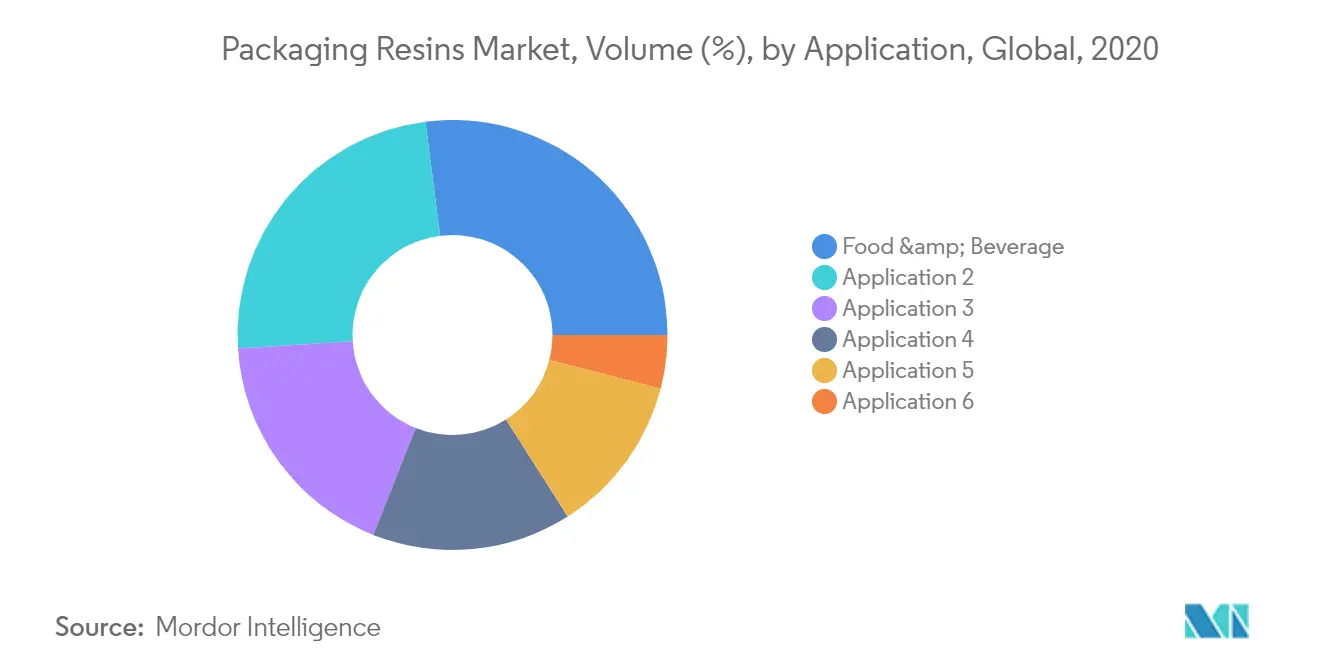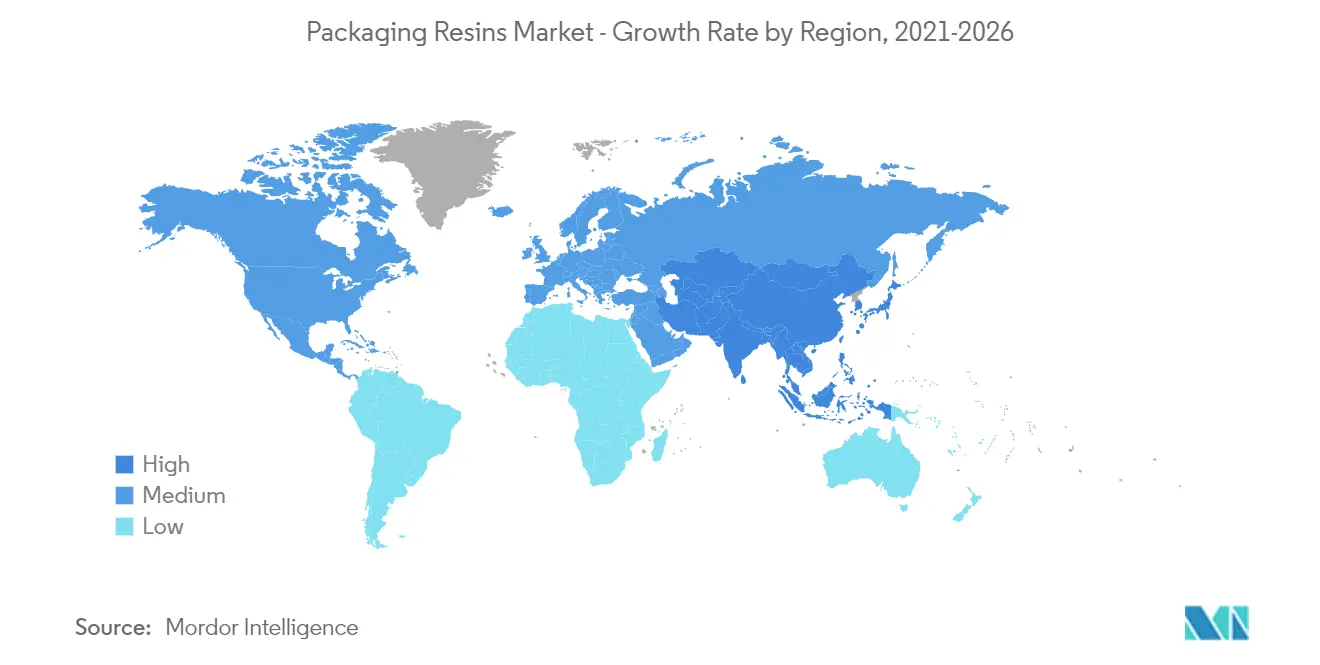Market Trends of Packaging Resins Industry
This section covers the major market trends shaping the Packaging Resins Market according to our research experts:
Food and Beverage Segment to Dominate the Market Demand
- The food and beverage segment stands to be the dominating segment among applications, where packaging requirement is widely driven by a growing need to increase the shelf life of products, thus, protecting food products for longer periods.
- Packaging is one of the key aspects considered by the firms engaged in the food and beverage industry to ensure compatibility of packaging material with food, the durability of food, the safety of human health, and the attractiveness of the packaging.
- According to the China Chain store and franchise association, in the food and beverages segment, China has reached around USD 595 billion in 2019.
- The increase in the aging population, growing demand for convenient packaging, growth of the e-commerce business, the growing online food delivery market, and the packaging of products in different sizes and quantities are some of the market conditions that have been boosting the demand for flexible packaging, globally.
- In 2019, the United States packaging industry generated a total value of USD 180 billion. According to the Flexible Packaging Association, in the United States, more than 46% of Americans are willing to pay more for food and beverage products stored in flexible packaging than for food products kept in non-flexible packaging. Moreover, 71% of Americans may prefer flexible packaging over non-flexible packaging for a product they consider purchasing.
- Hence, with such factors driving the demand for flexible packaging material, the consumption of packaging resins has also been increasing from the food and beverage industry across the world.

Asia Pacific to Dominate the Market
- The Asia Pacific region represents the largest market, and it is also expected to be the fastest-growing market over the forecast period, owing to the increasing consumption from countries, such as China, India, and Japan.
- Factors, such as the rising disposable income, increasing consumer expenditure, and growing population, have been driving the demand for FMCG goods, which, in turn, have been driving the packaging requirements in Asia Pacific.
- The revenue generated by the Indian food industry increased from USD 68,960 million in 2010 to USD 262,339 million in 2019. The revenue generated by the processed meat increased from USD 1,882 million in 2019 to USD 2,302 million in 2020. The revenue generated from milk products and eggs increased from USD 76,441 million in 2019 to USD 92,304 million in 2020.
- The Japanese food industry witnessed major growth over the past decade. The revenue generated by the food industry in Japan increased from USD 131,616 million in 2010 to USD 138,488 million in 2019. The revenue generated by the meat products and sausages increased from USD 5,929.2 million in 2010 to USD 6,261.2 million in 2019. The revenue generated from milk products increased from USD 12,075.4 million in 2010 to USD 15,173.7 million in 2019.
- Furthermore, the growth in the production of beauty and personal care products in countries, like Japan, India, China, and ASEAN countries, has been driving the packaging demand in the region.
- China stands to be the second-largest market for beauty products in the world, after the United States. Considering the growth prospects for the cosmetics industry in China, international cosmetic brands entered the market, which led to intense competition in the domestic cosmetic industry.
- Due to the COVID-19 impact, the personal care market has fallen by 4.6%, and the cosmetics market has fallen by 3.9% in terms of revenue in 2020 compared to the previous year.
- However, such intensified competition and growing cosmetic production in the country have been further driving the packaging demand.
- Hence, all such market trends are expected to drive the demand in the packaging resins market in the region during the forecast period.


